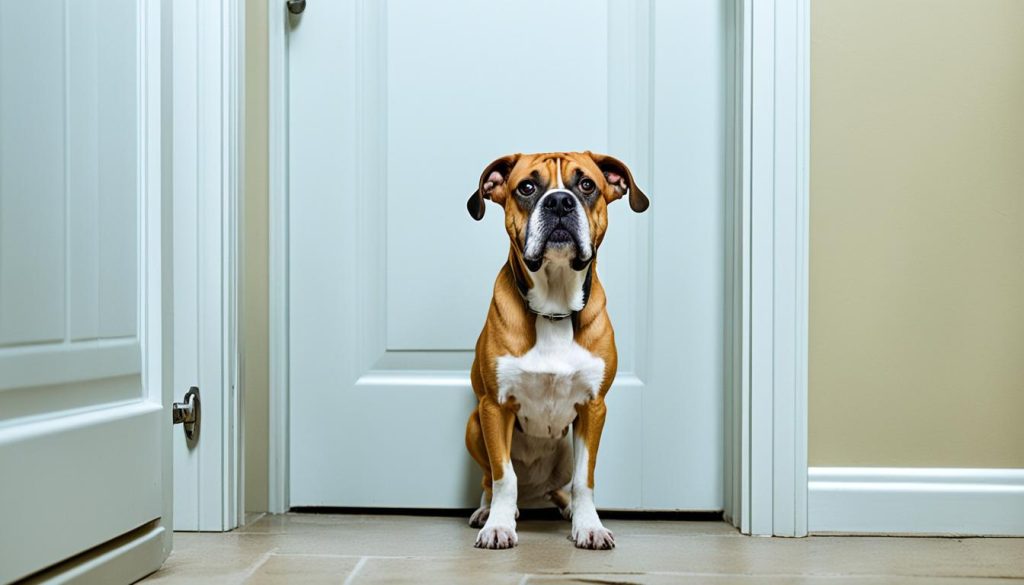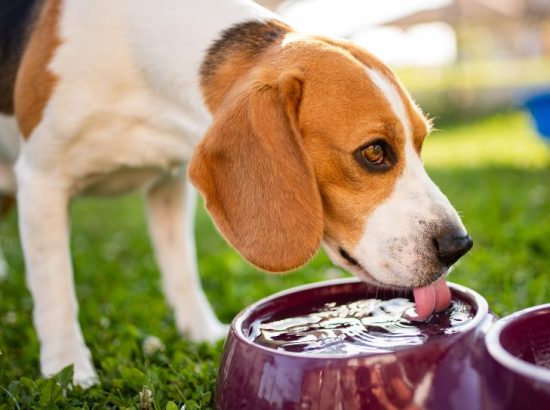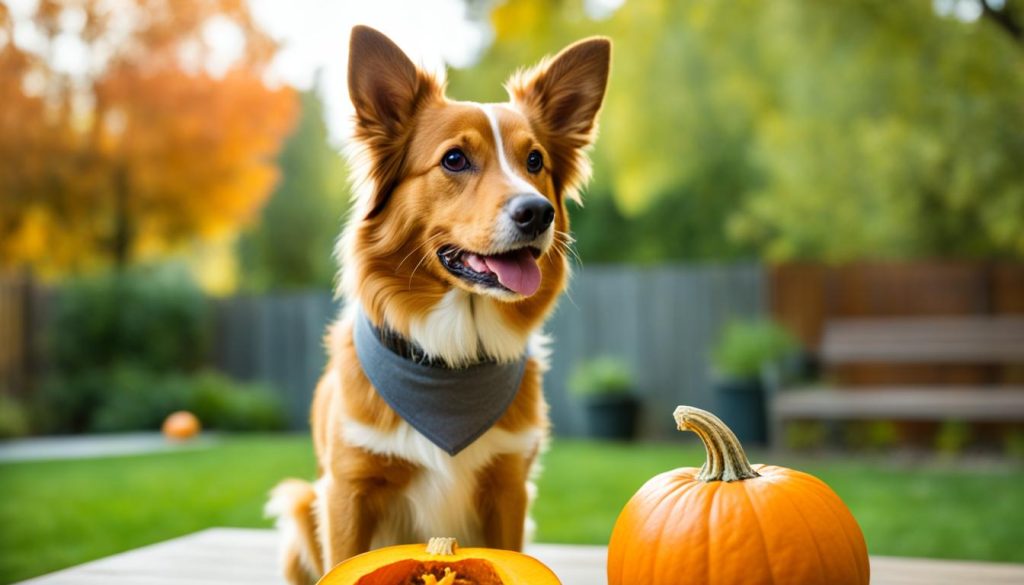How to Make a Constipated Dog Poop Quickly – 5 Easy Tips
Discover effective methods on how to make a constipated dog poop quickly with our 5 easy tips designed for your furry friend’s relief.

Have you ever wondered how to make a constipated dog poop quickly? It’s not something we like to think about, but constipation can be a common issue for our furry friends. Whether it’s caused by dietary changes, lack of exercise, or a medical condition, constipation can be uncomfortable and even painful for dogs. But fear not, there are easy tips that can help your constipated dog find relief fast.
In this article, we will explore five simple yet effective techniques to help your constipated dog poop quickly. These tips can provide immediate relief and promote overall digestive health for your beloved canine companion.
Constipation in dogs is something that should not be ignored. Just like humans, dogs need regular bowel movements to stay healthy and happy. By addressing constipation promptly, you can prevent potential complications and ensure your dog’s well-being.
So, are you ready to learn how to make a constipated dog poop quickly? Let’s dive into the five easy tips that can bring relief to your constipated furry friend.
Understanding Canine Constipation and Its Implications

Canine constipation is a common digestive disorder that affects dogs of all breeds and sizes. It occurs when there is difficulty or infrequency in passing stools, resulting in discomfort and potential health risks for our furry friends. There are several factors that can contribute to constipation in dogs. One of the primary causes is an inappropriate diet that lacks sufficient fiber content. Additionally, inadequate hydration, lack of exercise, and certain medical conditions such as intestinal blockages or anal gland issues can also lead to constipation in dogs.
| Causes of Constipation in Dogs | |
|---|---|
| Inadequate fiber intake in the diet | Dehydration |
| Lack of exercise | Intestinal blockages |
| Anal gland issues |
Recognizing the Signs and Symptoms
It is essential for dog owners to be able to identify the signs and symptoms of constipation in their pets. Common indicators include straining to defecate, passing small and hard stools, and showing signs of discomfort or pain during bowel movements. Additionally, dogs experiencing constipation may lose their appetite or exhibit signs of lethargy.
The Risks of Ignoring Constipation in Dogs
Ignoring constipation in dogs can lead to more severe health issues if left untreated. Prolonged constipation can cause fecal impaction, where a large mass of hardened stool becomes stuck in the colon, leading to discomfort and potential obstruction of the digestive system. Additionally, constipation can also be a symptom of underlying health problems, such as intestinal blockages or gastrointestinal diseases, which may require immediate medical attention.
It is crucial for dog owners to address constipation in a timely manner to prevent these complications and maintain their furry friends’ overall well-being.
Implementing a Proper Diet to Alleviate Constipation
When it comes to relieving constipation in dogs, implementing a proper diet is crucial. Providing a balanced and fiber-rich diet can promote regular bowel movements and alleviate constipation. There are specific dietary changes you can make to help your constipated dog find relief.
One effective dietary change is to add canned pumpkin to your dog’s food. Pumpkin is rich in fiber and can help soften the stool, making it easier for your dog to pass. The high fiber content also aids in regulating bowel movements. Simply mix a tablespoon of canned pumpkin into your dog’s food, adjusting the amount based on their size.
Another option is to incorporate fiber supplements into your dog’s diet. These supplements can provide the necessary fiber to promote regularity and relieve constipation. Consult with your veterinarian to determine the appropriate fiber supplement and dosage for your dog.
Additionally, consider switching to dog food specifically formulated to promote digestive health and regulate bowel movements. Look for dog food that is labeled as suitable for dogs with constipation. These formulas often contain a balanced blend of fiber and nutrients to support a healthy digestive system.
Ensuring Hydration: A Key Factor in Canine Digestive Health
When it comes to maintaining your dog’s digestive health, hydration plays a crucial role. Proper hydration is essential for keeping the digestive system functioning smoothly and preventing issues such as constipation. In this section, we will explore the significance of fresh water access and the role of wet foods in promoting hydration for your canine companion.
Significance of Fresh Water Access

Providing your dog with access to fresh water at all times is vital for their overall well-being.Fresh water helps keep your dog hydrated, aids in digestion, and ensures the proper functioning of various bodily systems. Inadequate water intake can lead to dehydration, which can contribute to constipation in dogs.fresh water for dogs It’s important to check your dog’s water bowl regularly to ensure it is filled and clean. Encourage your dog to drink by placing their water bowl in a easily accessible location and refreshing the water throughout the day.
The Role of Wet Foods in Promoting Hydration
In addition to fresh water, incorporating wet foods into your dog’s diet can provide additional hydration. Wet food for hydration Wet dog foods typically have a higher moisture content than dry kibble, which can help keep your dog hydrated. When selecting wet foods, look for options that are made with high-quality ingredients and formulated to promote digestive health. These foods can help add moisture to your dog’s digestive system, supporting regular bowel movements and preventing constipation.
To ensure your dog stays hydrated, add wet food to their meals or mix it with their dry kibble. This combination can provide the necessary hydration while offering a balanced diet’s nutritional benefits. Remember to consult with your veterinarian for guidance on the appropriate amount of wet food to incorporate into your dog’s daily routine.
Incorporating Exercise into Your Dog’s Routine for Digestive Mobility
Regular exercise is essential for promoting digestive mobility in dogs. Just like humans, dogs need physical activity to keep their digestive system functioning smoothly. Exercise helps stimulate bowel movements and prevents constipation, ensuring that your furry friend stays healthy and comfortable. It also provides a wide range of other benefits, including maintaining a healthy weight, improving cardiovascular health, and reducing stress levels.
Here are some tips for incorporating exercise into your dog’s routine:
- Take daily walks: Going for walks is a great way to get your dog moving and promote regular bowel movements. Aim for at least 30 minutes of brisk walking each day. Vary the route and explore different environments to keep things interesting for your pup.
- Make playtime a priority: Engage in interactive play sessions with your dog using toys and games that encourage physical activity. This can include throwing a ball, playing tug-of-war, or setting up an agility course in your backyard.
- Try canine sports: Consider enrolling your dog in activities such as agility training, flyball, or dock diving. These sports provide mental and physical stimulation while promoting digestive mobility.
- Provide mental stimulation: Puzzle toys, treat-dispensing toys, and interactive games can help keep your dog mentally engaged and physically active. These activities can also stimulate gut motility and promote healthy digestion.
Remember to adjust the exercise routine based on your dog’s age, breed, and overall health. It’s important to gradually increase activity levels and avoid overexertion, especially in older or less active dogs. Always consult with your veterinarian before initiating a new exercise regimen to ensure it suits your dog’s individual needs.
| Exercise Type | Benefits |
|---|---|
| Walking | – Stimulates bowel movements – Promotes cardiovascular health – Maintains a healthy weight |
| Playtime | – Improves mental and physical stimulation – Encourages gut motility – Reduces stress levels |
| Canine sports | – Provides mental and physical stimulation – Promotes digestive mobility – Builds a stronger bond with your dog |
| Mental stimulation | – Engages your dog’s mind – Promotes gut motility – Prevents boredom-related behaviors |
How to Make a Constipated Dog Poop Quickly
If you have a constipated dog, you understand the urgency of finding quick relief for them. Here are some tips and techniques to help your furry friend relieve themselves and get back to their normal bowel movements.
1. Gently massage the dog’s abdomen
To help a constipated dog poop quickly, gently massaging its abdomen can be highly effective. Use your fingertips to apply light pressure in circular motions on the dog’s stomach, moving from the ribs down to the lower abdomen. This can stimulate the muscles and intestines, encouraging bowel movement. Be sure to keep the massage gentle and soothing, ensuring your dog remains calm and relaxed throughout the process. Regular abdominal massages can also help prevent future episodes of constipation by promoting healthy digestion.
2. Use wipes to stimulate bowel movements
Using wipes to stimulate your dog’s bowel movements can be a practical approach to relieving constipation. Gently wipe around your dog’s anus with a moist, unscented baby wipe or a specially designed pet wipe. The gentle pressure and moisture can mimic the sensation of a mother dog cleaning her puppies, which can naturally stimulate the need to defecate. Ensure you do this in a calm and comforting manner to avoid causing stress or discomfort to your dog.
3. Gently squirt cool water on the dog’s bum
Gently squirting cool water on your dog’s bum can help stimulate a bowel movement, especially if other methods haven’t worked. Use a spray bottle or a gentle stream from a hose to apply the water, which can prompt the muscles around the anus to contract and encourage defecation. This method can be particularly useful if your dog is resistant to other forms of stimulation. Be careful not to use water that is too cold or to apply too much pressure, as this can cause discomfort or distress.
4. Patience is key
When dealing with a constipated dog, patience is crucial. While you may be eager to see immediate results, it’s important to remain calm and composed to avoid stressing your dog. Give each method enough time to work and monitor your dog’s responses closely. Consistently provide your dog with plenty of fresh water, a balanced diet rich in fiber, and regular exercise to promote overall digestive health. If your dog continues to struggle with constipation, consult your veterinarian for further advice and potential treatments.
The Benefits of Pumpkin and Other Natural Laxatives for Dogs
Dogs can suffer from constipation, just like humans. If your furry friend is experiencing difficulty in passing stools, it’s essential to address the issue promptly for their comfort and well-being. While there are various remedies available, incorporating natural laxatives can be a safe and effective solution to alleviate constipation in dogs. One such natural laxative is pumpkin.
Why Pumpkin Can Be Effective
Pumpkin is a natural fiber-rich food that can promote regular bowel movements in dogs. It acts as a gentle bulking agent, adding moisture to the stool and aiding in its passage. The high fiber content in pumpkin helps soften the stool, making it easier for your dog to poop. Additionally, pumpkin is packed with nutrients, including vitamins A, C, and E, as well as potassium, which can contribute to overall digestive health.
When using pumpkin as a natural laxative for your constipated dog, it is crucial to choose plain canned pumpkin rather than pumpkin pie filling. The latter contains added sugars and spices that may be harmful to your dog. Start by adding a small amount of pumpkin to your dog’s regular food and gradually increase the quantity until you observe improved bowel movements. Consult your veterinarian regarding the appropriate dosage for your dog’s size and condition.
Alternative Natural Solutions for Dog Constipation
In addition to pumpkin, there are other natural laxatives that you can incorporate into your dog’s diet to alleviate constipation. Some effective alternatives include:
Slippery Elm
Slippery elm is a natural remedy that can be highly effective for alleviating dog constipation. This herbal supplement is derived from the inner bark of the slippery elm tree and contains mucilage, a gel-like substance that soothes and lubricates the digestive tract. To use, mix a small amount of powdered slippery elm with water to create a paste, and then add it to your dog’s food. This can help soften the stool and promote regular bowel movements. Always consult your veterinarian before introducing any new supplement to ensure the correct dosage and safety for your dog’s specific needs.
Psyllium Husk
Psyllium husk is another excellent natural solution for dog constipation, known for its high fiber content. When ingested, psyllium husk absorbs water and expands, helping to soften stools and make them easier to pass. To use, sprinkle a small amount of powdered psyllium husk over your dog’s food and ensure they have plenty of fresh water to drink. This added fiber can regulate bowel movements and promote a healthy digestive system. It’s essential to consult your veterinarian for the appropriate dosage based on your dog’s size and condition.
Olive Oil

Physical Techniques: How to Massage a Dog to Relieve Constipation
If your dog is suffering from constipation, massage can be a helpful technique to provide relief. By applying gentle pressure and specific techniques, you can stimulate bowel movements and promote relaxation in your furry friend.
To massage a constipated dog, follow these step-by-step instructions:
- Find a quiet and comfortable space where you and your dog can relax without distractions.
- Begin by gently petting your dog to help them relax and feel comfortable.
- Place your hands on your dog’s abdomen and use gentle circular motions. Start from the ribcage and move towards the back end of your dog.
- Apply light pressure while massaging to stimulate the muscles and promote bowel movements.
- Focus on the lower back area, as this is where the large intestine is located. Use your fingertips to gently rub and apply pressure to this area.
- Continue massaging for 5-10 minutes, or until your dog starts to feel relaxed.
Massage can help relieve constipation by promoting blood circulation and stimulating the digestive system. It can also help reduce stress and discomfort in your dog, which may contribute to constipation. Remember to always be gentle and attentive to your dog’s reactions during the massage.
When to Consult a Vet: Identifying Severe Constipation Cases
While mild cases of constipation in dogs can often be managed at home, severe or persistent constipation requires veterinary attention. It’s essential to recognize the signs and understand when it’s time to seek professional help for your constipated dog.
Dealing with Persistent Issues
If your dog has been experiencing constipation for an extended period, it may be a sign of an underlying problem that needs to be addressed. Persistent constipation can be caused by various factors, including dietary issues, dehydration, intestinal blockages, or medical conditions.
Consulting a vet is crucial to determine the underlying cause and establish an appropriate treatment plan. They can conduct thorough examinations, perform diagnostic tests, and recommend the necessary interventions to relieve the constipation and manage the underlying issue.
Recognizing When Home Remedies Aren’t Enough
While home remedies can be effective in many cases, there are situations where they may not provide sufficient relief for your constipated dog. If you’ve tried different methods, such as dietary changes, exercise, and natural remedies, but your dog’s constipation persists or worsens, it’s time to consult a vet.
Other signs that indicate the need for veterinary attention include:
- Prolonged constipation: If your dog has not defecated for more than a day or two, it’s a cause for concern.
- Severe pain or distress: If your dog shows signs of significant discomfort while trying to defecate, it’s important to seek professional help.
- Vomiting or lack of appetite: Constipation can sometimes lead to secondary symptoms like vomiting or loss of appetite.
Veterinarians have the expertise and resources to diagnose the severity of the constipation and provide appropriate medical interventions. They can administer enemas, prescribe medications to soften the stool, or perform procedures to remove any intestinal blockages, if necessary.
Probiotics for Gut Health: Aiding Your Dog’s Digestive System
Probiotics play a significant role in improving digestion and promoting gut health in dogs. Just like in humans, probiotics can benefit dogs by regulating bowel movements and alleviating constipation. Probiotics promote a healthy gastrointestinal system in our furry friends by balancing the gut flora.
Probiotics introduce beneficial bacteria into the dog’s digestive tract, which aids in the breakdown and absorption of nutrients. This improved digestion helps prevent constipation and promotes regular bowel movements, ensuring your dog’s comfort and well-being.
Various probiotic supplements are available on the market specifically formulated for dogs. These supplements contain live and active cultures of beneficial bacteria that can help restore and maintain a healthy balance in the gut. When choosing a probiotic supplement for your constipated dog, look for products specifically designed for canine use and have strains known to be effective in promoting digestion.
To incorporate probiotics into your dog’s daily routine, follow the recommended dosage instructions provided by the manufacturer. It’s important to note that probiotics may take some time to show their effects, so consistency is key. You may start seeing improvements in your dog’s digestive health and bowel movements after a few weeks of regular use.
FAQs on how to make a constipated dog poop quickly
How can I manually help my dog poop?
There are several techniques you can try to manually help your constipated dog poop. Gently massaging their abdomen in circular motions can stimulate bowel movements. You can also use wipes to stimulate the anus or gently squirt cool water on their bum. Remember to be patient and provide a quiet and comfortable environment for your dog during the process.
Is there a natural laxative for dogs?
Yes, there are natural laxatives that can help relieve constipation in dogs. Pumpkin is known to be effective as it provides fiber and moisture to help soften stool and promote regular bowel movements. Other natural laxatives for dogs include slippery elm, psyllium husk, and olive oil. However, it’s important to consult your veterinarian for proper dosage and administration.
How do you massage a constipated dog to poop fast?
To massage a constipated dog, gently apply circular motions on their abdomen to stimulate bowel movements. You can also apply gentle pressure on their lower back. Massage helps stimulate the digestive system and can promote relaxation in dogs.
How can I make my dog poop right away?
While it’s not recommended to rush the process, there are a few things you can try to help your dog poop. You can gently massage their abdomen, use wipes to stimulate the anus, or gently squirt cool water on their bum. However, it’s important to be patient and provide a quiet and comfortable environment for your dog during the process.
How do I get my dog’s poop back to normal?
To get your dog’s poop back to normal, it’s important to address the underlying cause of their constipation. Provide a balanced and fiber-rich diet, ensure they have access to fresh water at all times, and incorporate regular exercise into their routine. If the constipation persists or if your dog shows signs of severe pain, vomiting, or lack of appetite, it’s essential to consult a veterinarian for proper diagnosis and treatment.





